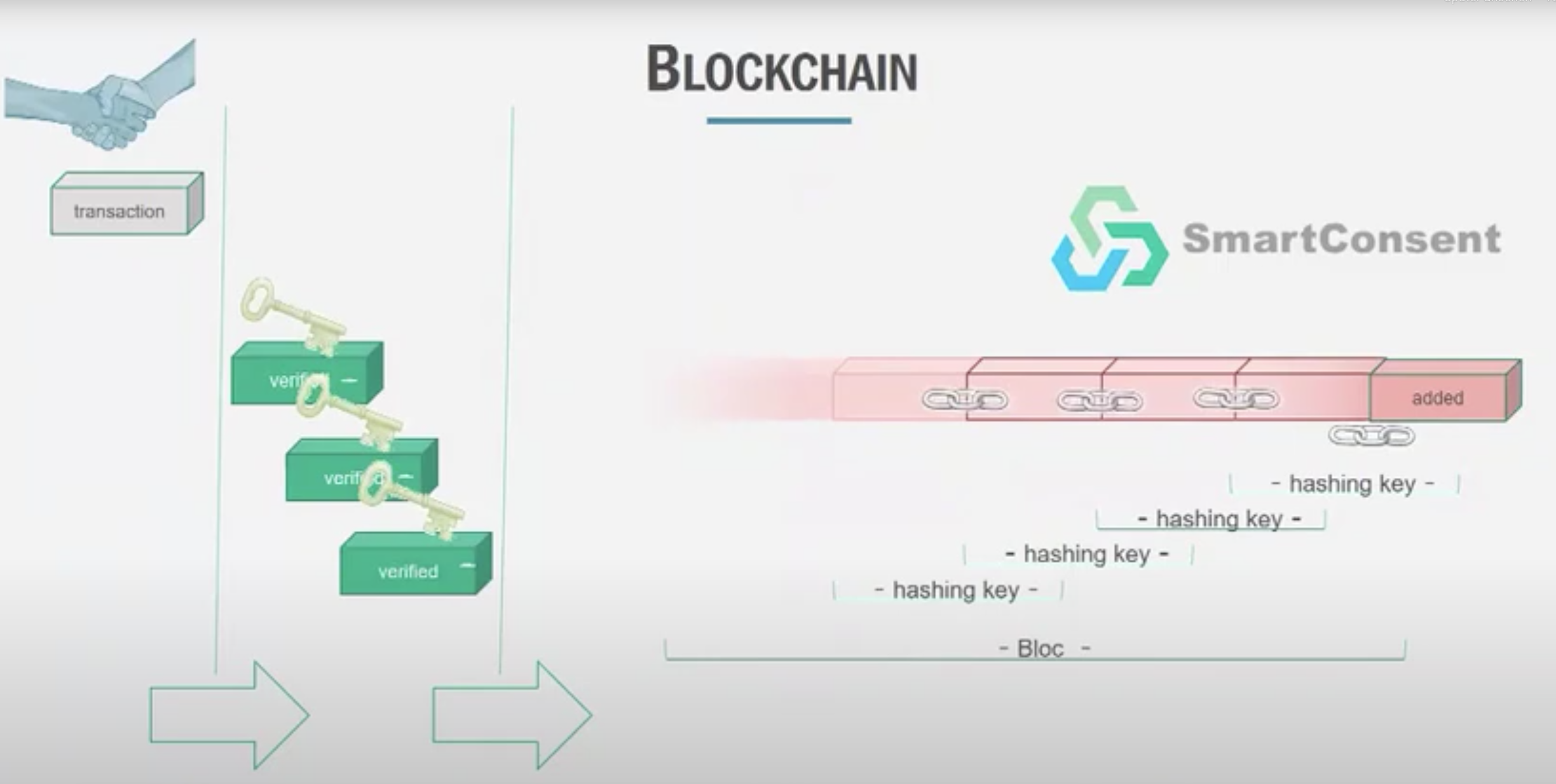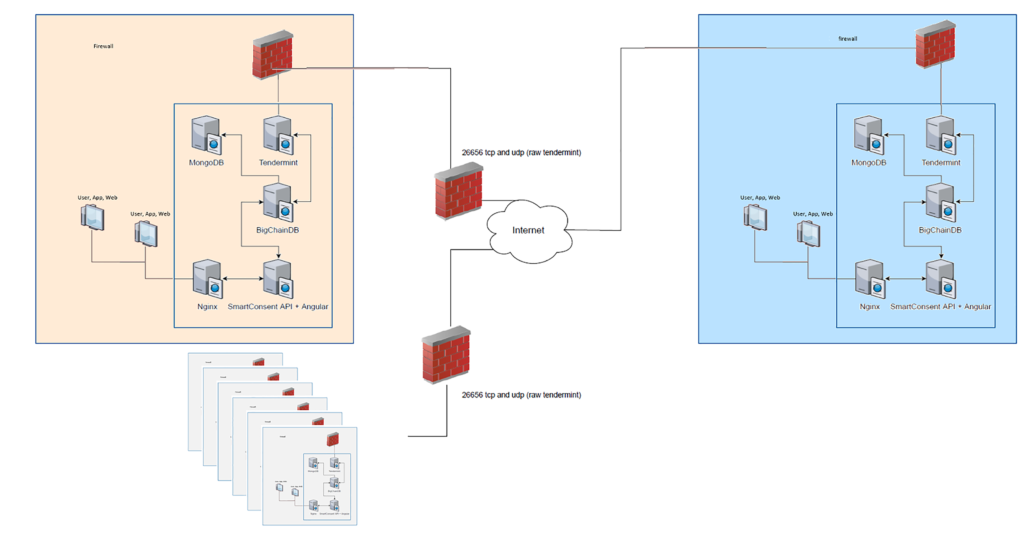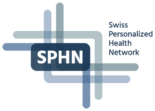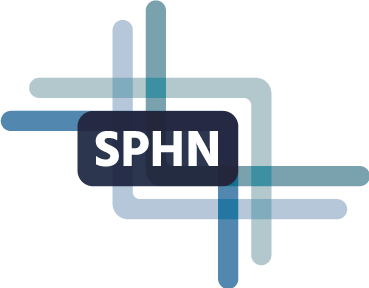C3-STuDY: Citizen Centered Consent: Shared, Transparent and Dynamic
Project consortium: Prof. Christian Lovis (HUG/UniGE), Prof. Caroline Samer (HUG/UniGE), Nicolas Rosat (CHUV), Christine Currat (SBP).
Additional funding for this project was also provided by the Leenards Foundation and HUG.
Main achievements
- Inventory and landscape of consent types used in Switzerland
- Critical properties of consent defining its behaviour
- Exploration of certificate management processes compliant with hospital’s IT
- Implementation with two blockchains (Hyperledger and BigChainDB) with a REST API layer of services
- Implementation of a web front-end as demonstrator
- Pilot deployment in one university hospital (CHUV)
Reusable infrastructures
Replicated distributed dabatase for the General Consent in Switzerland
The blockchain technology allows to have a replicated database of transactions in a distributed network of nodes that cross validate each transaction stored in the database.

Figure 1: Blockchain technology: replicated transaction database with a distributed mechanism of validation.
- Each node of the network holds a full copy of the blockchain (=replication) which builds the property of robustness and integrity;
- Every new transaction to be added to the chain must to be validated by more than one node, which builds the property of trust of transactions.
- It is not possible to change the chain itself, thus the «past cannot be altered», which build the property of a transaction to be non retractable.
- However, it is always possible to add a new transaction that reverts the action of a previous one, which builds the property of being revocable.
Non retractability and revocability are two essential properties of Consent. In addition, the fact that past actions cannot be deleted ensures a strong traceability off all what was done. Together, it thus builds a framework supporting:
- Non retractability (I cannot change the past)
- Revocability (I can change my mind)
- Traceability (I can see the history of all my decisions)

Figure 2: Overall architecture of the blockchain backbone
Access to developed infrastructure
The implementation has been done by Iabsis, an experienced software company:
Iabsis SARL: Chemin des Préjins, 18, CH-1218 Le Grand-Saconnex, Mobile : +41 76 302 02 86, Web : https://iabsis.com
The whole documentation and available source code can be accessed through their CMS, https://projects.iabsis.com/projects/hug-smart-consent, with API description, frontends and backend on a git compliant, as well as a wiki for FAQ and management. An account is required, which is delivered by Iabsis SARL.
Project related references and links
- BigChainDB documentation
- SPHN Infrastructure development project E-consent: Development and Implementation of a Nationwide Harmonized and Interactive Electronic General Consent
Watch the SPHN webinar
Consent management is becoming a central challenge in the era of data-driven science and precision medicine. This project is focusing on building a new approach for consent management in proposing a broad vision that goes beyond the traditional boundaries of the broad/general or specific research-driven consent.
References on Pubmed
- Rochat J, Gaudet-Blavignac C, Del Zotto M, Ruiz Garretas V, Foufi V, Issom D, Samer C, Hurst S, Lovis C. Citizens' Participation in Health and Scientific Research in Switzerland. Stud Health Technol Inform. 2020 Jun 16;270:1098-1102. doi: 10.3233/SHTI200332.
Disclaimer: The contents on this website are intended as a general source of information and have been provided by the project PIs. The SPHN Management Office is not responsible for its accuracy, validity, or completeness.

